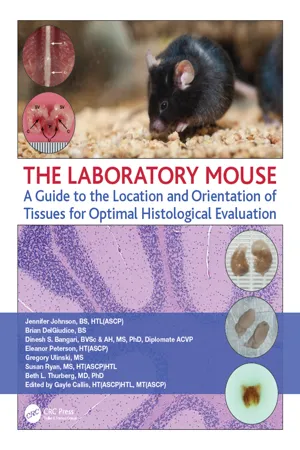
The Laboratory Mouse
A Guide to the Location and Orientation of Tissues for Optimal Histological Evaluation
Jennifer Johnson, Brian DelGiudice, Dinesh Bangari, Eleanor Peterson, Gregory Ulinski, Susan Ryan, Beth Thurberg
- 93 pages
- English
- ePUB (adapté aux mobiles)
- Disponible sur iOS et Android
The Laboratory Mouse
A Guide to the Location and Orientation of Tissues for Optimal Histological Evaluation
Jennifer Johnson, Brian DelGiudice, Dinesh Bangari, Eleanor Peterson, Gregory Ulinski, Susan Ryan, Beth Thurberg
À propos de ce livre
Key features:
- High quality full color photographs and descriptive texts on the location and removal of the organs from the mouse
- Instructive methods and clear visuals for trimming and orienting the organs for paraffin histology to obtain the best possible sections for analysis
- Full color photomicrographs of the resulting section for each organ stained with hematoxylin and eosin demonstrating important features and landmarks for the histologist to ensure the optimal area for analysis is achieved
- All in one, easy to use guide organized by individual organs of the laboratory mouse
-
Spiralbound for easy reference in the lab
This "one-stop" guide offers an essential resource for any academic, research or development operation where mouse necropsy and/or histology are performed. Connecting the reader 'from the mouse to the microscope', it provides a detailed guide for locating, trimming, orientating and embedding of the most frequently investigated tissues collected in the laboratory mouse. It shows where the organs reside in the mouse, how to trim and embed them as well as the resulting optimal sections. This guide brings together the wealth of scattered information into one high-quality text, the emphasis is on providing knowledge that will help histologists and scientists get better results in any downstream assays where ideal sections are needed.